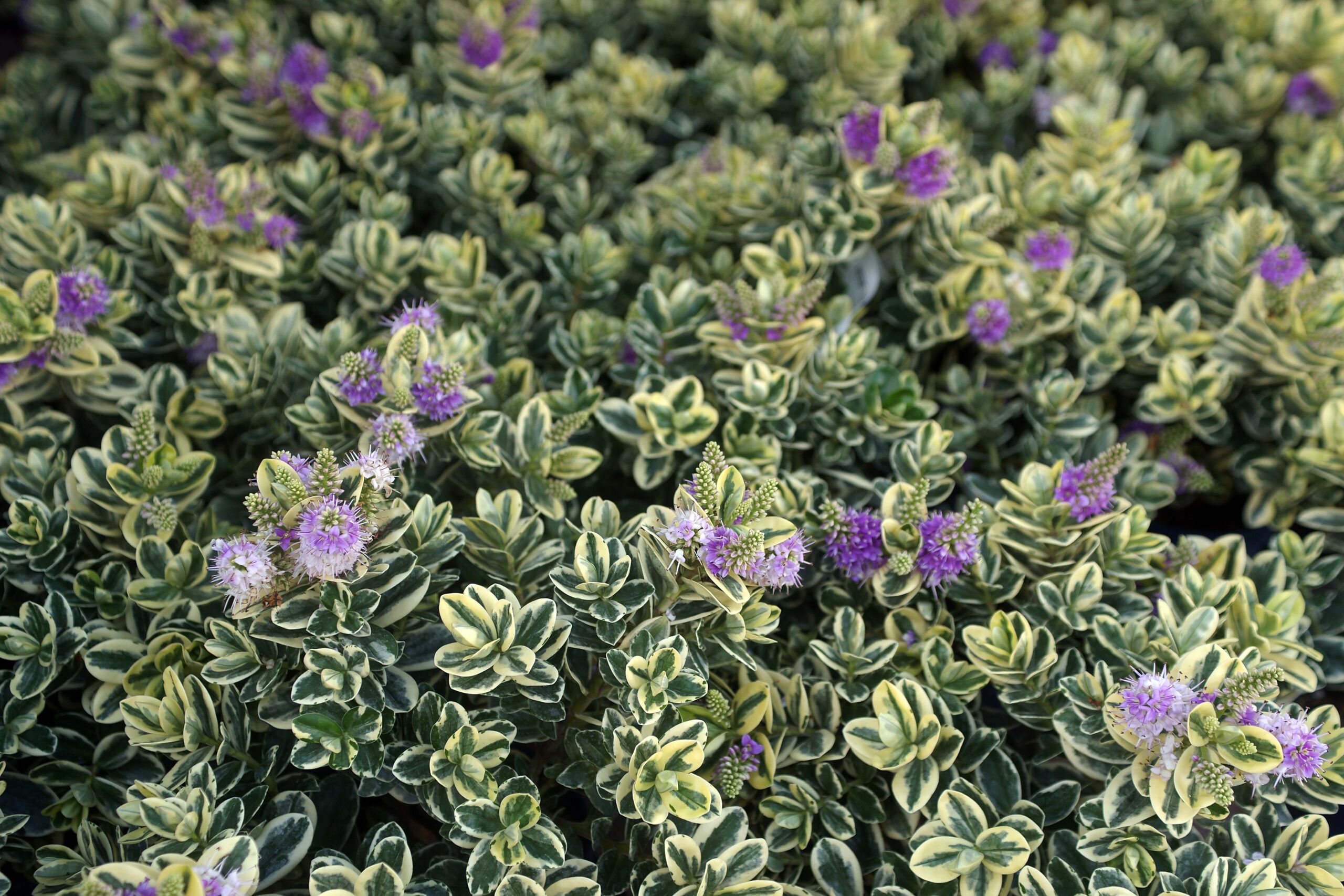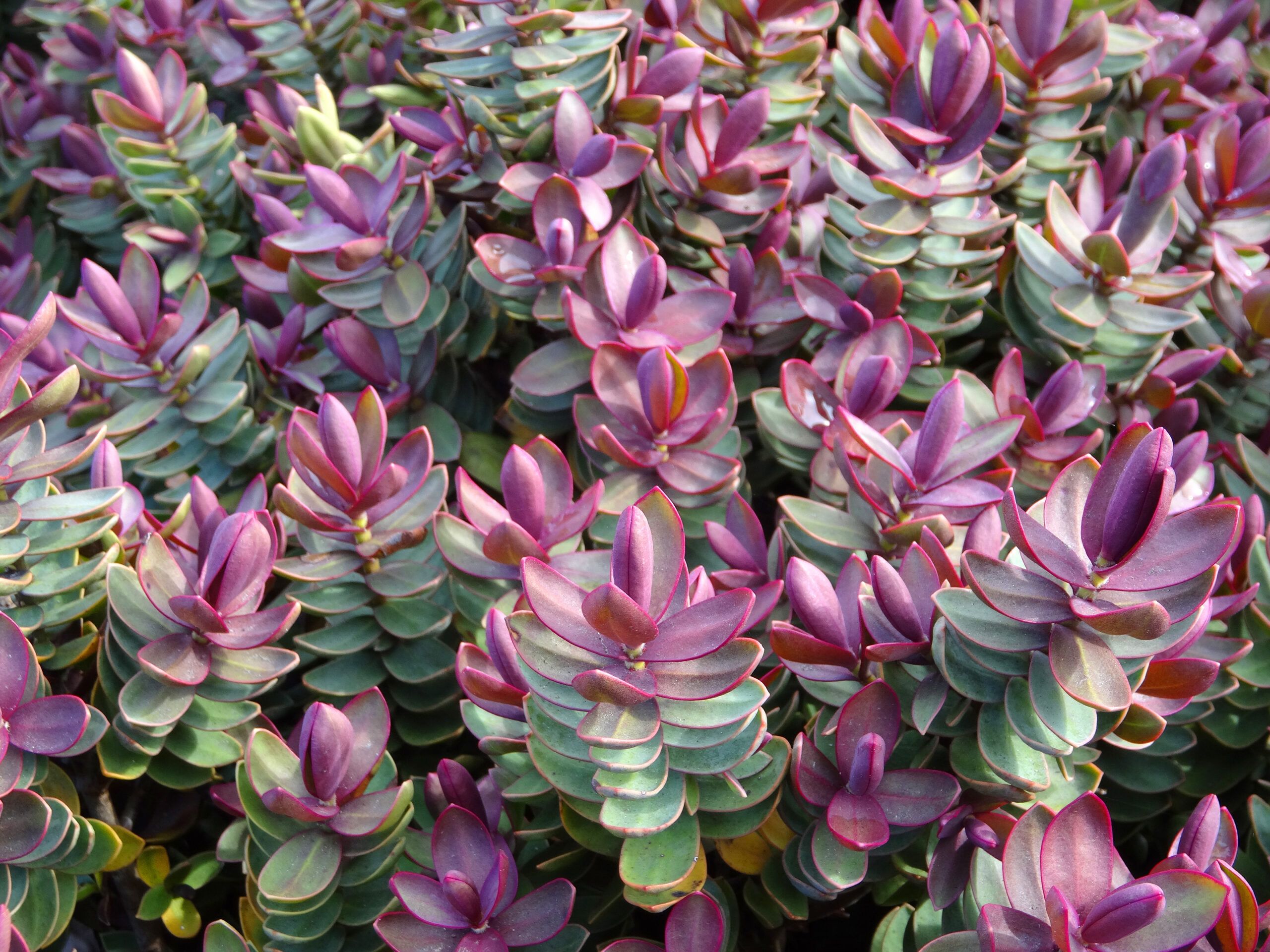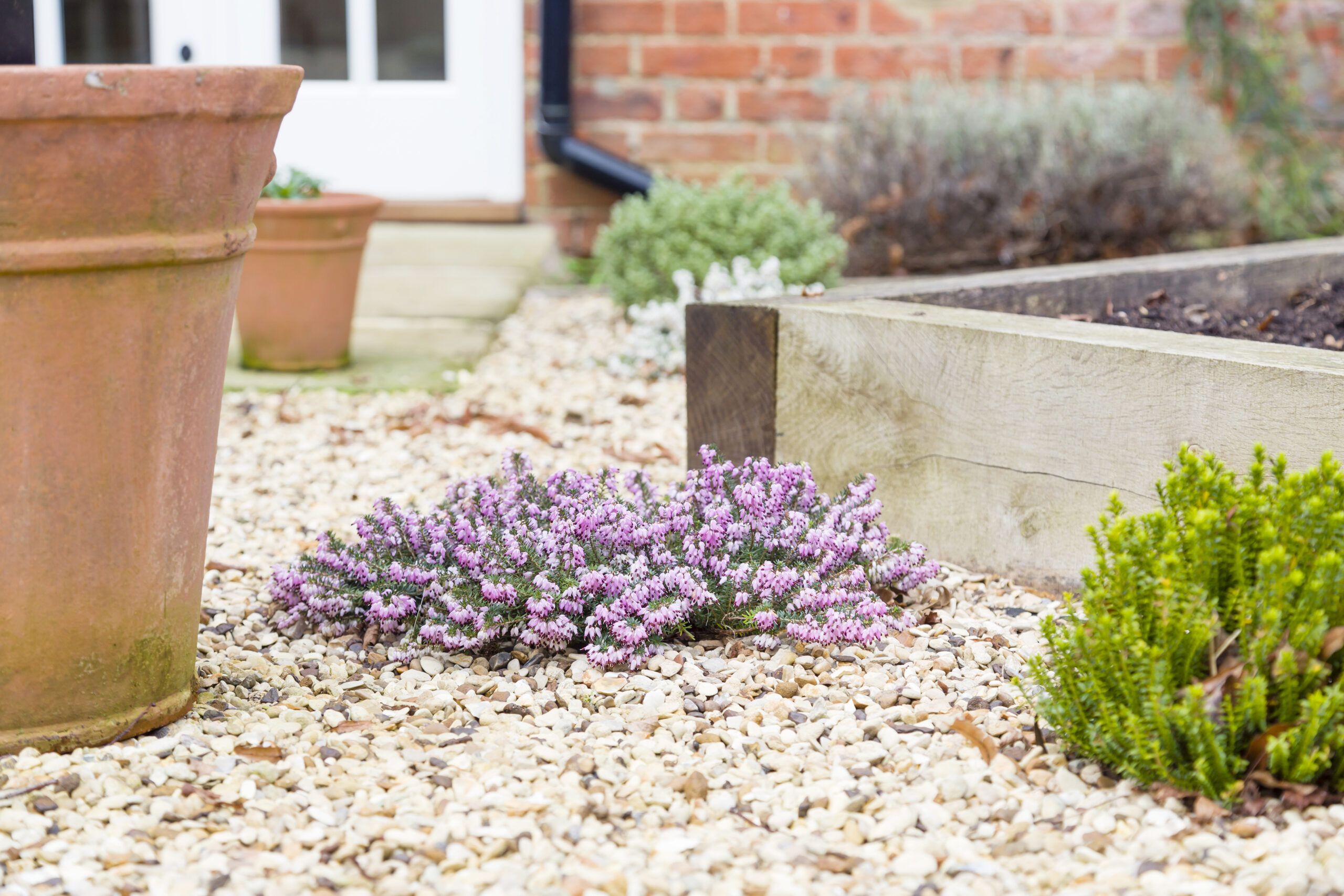Hebe shrubs are a great addition to any garden, offering year-round beauty with their evergreen foliage and colorful blooms. These versatile plants, native to New Zealand, perform best in areas with warm summers and mild winters and are relatively easy to care for. In this guide, we’ll explore how to grow and maintain these charming shrubs, from selecting the right variety to troubleshooting common issues.
Popular Hebe Shrub Varieties
Hebe varieties have gained popularity among gardeners for their unique characteristics and beauty. Here are some popular options:
- Hebe Variegata: This variety grows up to 6 feet tall, making it ideal for tall hedges. It features purple blooms and cream-edged foliage.
- Grace Kelly: This is similar to Hebe Variegata but shorter, reaching about 3 feet in height.
- Wiri Blush: This variety is known for its dark green leaves and striking hot pink blooms.
- Western Hills: This variety features silver-gray leaves and white or pale lavender flowers.
- Baby Bush and Baby Marie: These compact varieties with small foliage are better suited for colder climates.

Selecting the Right Hebe for Your Garden
There are several factors to consider before you settle on a hebe variety for your garden:
- Available space: Ensure you have enough room for the mature size of the plant.
- Climate: Choose varieties that are well-suited to your local weather conditions.
- Garden design goals: Consider the height, spread, and overall appearance you want to achieve.
- Soil type: Hebes generally prefer well-draining, slightly acidic to neutral soil.
- Sun exposure: Most hebes prefer full sun or partial shade.
The best hebe varieties for colder regions are Baby Bush, Baby Marie, Hebe pinguifolia “Pagei,” and Hebe ochracea “James Stirling.” For milder climates, try Hebe speciosa, Hebe “Great Orme,” or Hebe “Midsummer Beauty.”
How To Plant Hebe Shrubs
Hebes thrive in moist, sandy soil with good drainage. The pH should be neutral to slightly acidic. If your soil is heavy clay, consider adding organic matter to improve drainage and aeration.
Select an area that receives plenty of light or at least partial sun. Too much shade can result in leggy growth and poor flower production. In areas prone to freezing winters, plant hebes where they will be sheltered but not crowded by other plants or structures.
Follow these steps to plant your hebe shrub:
- Prepare the planting area by removing weeds and loosening the soil.
- Dig a hole twice the width of the root ball and as deep as the container.
- Remove the plant from its container and gently loosen the roots.
- Place the plant in the hole at the same depth it was in the container.
- Backfill with soil, firming gently around the roots.
- Water thoroughly to settle the soil and eliminate air pockets.
- Apply a 2–3 inch layer of mulch around the base, keeping it away from the stem.

Caring for Your Hebe Shrubs
Proper watering, fertilization, and pruning help maintain healthy and vibrant hebe shrubs.
Watering Requirements
Hebe shrubs are fairly drought-resistant for much of the year. However, they benefit from regular watering during their first growing season to establish a strong root system. After this has been established, follow these watering guidelines:
- During summer: Provide about an inch of water weekly to encourage bountiful blooms.
- In other seasons: Water when the top inch of soil feels dry.
Avoid overwatering, as hebes are susceptible to root rot in waterlogged soil.
Fertilization Tips
Given the right growing conditions, hebe shrubs don’t require much fertilization. However, a light application of fertilizer in early spring can promote growth and blooming.
Use a slow-release, balanced fertilizer in early spring. Alternatively, add organic matter such as compost, leaf mold, or well-rotted manure. Avoid over-fertilizing, as this can lead to excessive foliage growth at the expense of flowers.
Pruning Techniques
Proper pruning helps maintain the shape of your hebe shrubs and encourages healthy growth. Prune after flowering to ensure robust blooms the following year. Remove any dead, damaged, or diseased branches as soon as you notice them. If a bush becomes spindly, cut back about one-third to encourage a denser, bushier form. Avoid heavy pruning in late fall or winter, as this can make the plant more susceptible to cold damage.
Protecting Hebe Shrubs From Pests and Diseases
While hebe shrubs are generally resistant to pests and diseases, they can face challenges. Be aware of these potential issues and how to address them to help keep your plants healthy.
Common Pests and How To Manage Them
Hebes aren’t prone to insect damage, but they may occasionally face the following:
- Aphids: Control with insecticidal soap or a strong spray of water.
- Scale insects: Remove by hand or treat with horticultural oil.
- Spider mites: Increase humidity and use neem oil if infestation is severe.
Preventing and Treating Diseases
Hebe may suffer from the following diseases:
- Downy mildew: To treat, improve air circulation and avoid overhead watering.
- Root rot: Ensure proper drainage and avoid overwatering.
- Septoria leaf spot: Remove affected leaves and improve air circulation.
Propagating Hebe Shrubs

Propagating hebe shrubs is a rewarding way to expand your garden or share plants with friends. There are several methods you can use to create new plants from your existing hebes.
Methods of Propagation
These are a few ways you can propagate your hebe shrub:
- Division: Suitable for mature, clump-forming varieties
- Layering: A slower but reliable method for some species
- Stem cuttings: The most common and easiest method
Incorporating Hebe Shrubs in Landscape Design
Hebe shrubs are versatile plants that can enhance your landscape design in various ways. Their compact growth habit and attractive foliage make them suitable for many garden styles.
As Borders and Hedges
Hebes make excellent privacy hedges due to their dense growth and evergreen foliage. Choose taller varieties like Hebe Variegata for hedges, or use smaller cultivars for low borders along pathways or garden beds.
In Container Gardens
Many hebe varieties, especially compact ones, thrive in containers. This makes them perfect for patios and balconies or for adding color to entryways. Make sure containers have good drainage, and use a high-quality potting mix.
Complementary Plants for Hebe Shrubs
Pair hebe shrubs with plants that have similar growing requirements. Some good companions include ornamental grasses, lavender, salvia, New Zealand flax, and small conifers. These combinations can create interesting textures and color contrasts in your garden.

